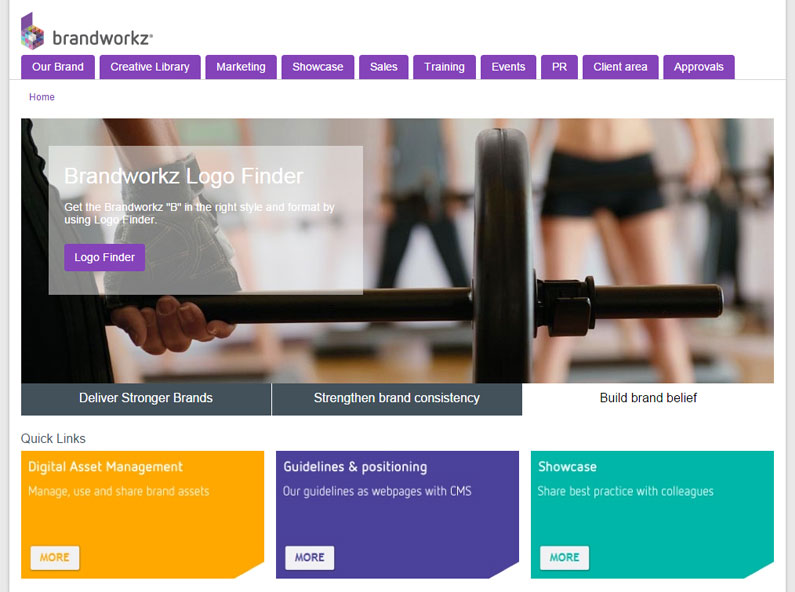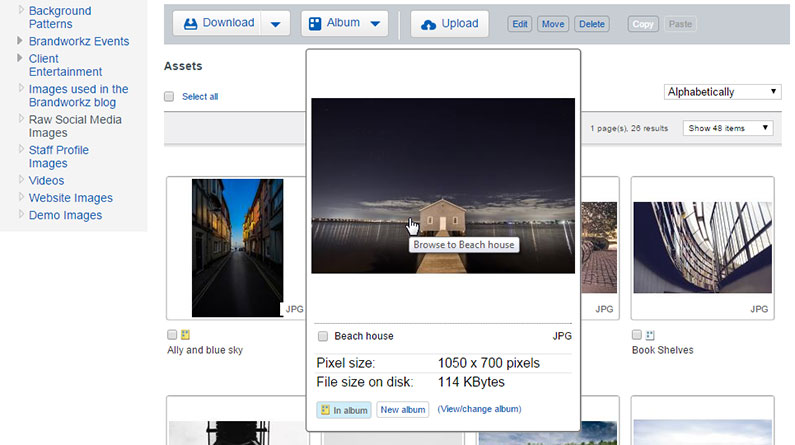Marketing is a digital business these days – yet, in some organisations, the internal processes or operations that enable much of this digital capability are still lagging woefully behind.
At Brandworkz we often hear from potential clients who are beginning to struggle with legacy systems. A common problem is a continuing reliance on File Transfer Protocol (FTP) sites to send or share large files between servers. Designers, agencies, photographers and other creatives have been using FTP since as long ago as the 1980s. Nowadays, however, FTP just doesn’t cut it as a strategic, long-term tool.
In today’s digital world we have to share much larger files and we need access to them all the time in our everyday work. With important marketing materials and brand assets stored on multiple servers in many different locations it’s inevitable that internal processes become chaotic. Time will be lost in searching for items and brand consistency will most certainly be compromised if the wrong materials are inadvertently used.
Here are the five chief reasons why you need more than an FTP site in today’s competitive marketing environment – and why a simple digital asset management (DAM) is the way forward:
Everything in one place
Digital asset management centralises all your digital assets– logos, imagery, whitepapers, case studies, videos, presentations, sales materials and all – in a single cloud-based location. This is the platform that becomes the hub of your marketing ecosystem, a one-stop shop for all content relating to brand, marketing, sales, HR or any other team that needs to access large quantities of content. And it’s all accessible from anywhere in the world at any time.
If you need to share some specific item, you create a ‘lightbox’ or ‘shopping cart’ and email the links plus thumbnail images to your colleague to access and download from the DAM system. Unlike an FTP site, there’s no need to waste time visiting various servers or waiting for someone to share a file with you. Neither is there a need for hosting, support or maintenance of an FTP site. Everything in digital asset management is handled off-site in the cloud.
Far better search and preview
Most DAM systems come with robust search capabilities that are just not possible with FTP. An FTP server will search based solely on the file name but DAM seeks out metadata, tags, file names and even the text within a document. A good system will also enable predictive search, displaying related results so you can find the correct file every time, even if you’re not sure what it’s called.
Another key feature of a good DAM system is its ability to preview assets, showing a thumbnail of the asset for which you’re searching. So it’s much quicker, there’s no guesswork and you’ll know you’re downloading or sending the right file – simple digital asset management is much better, unlike the guess-and-check game demanded by FTP.
So much more manageable
The manageability of a Digital Asset Management system enables you to manage the users of the system and the assets within it. For example, you can set different levels of permission for system users, so only the right people are allowed to see the right materials. More robust DAM systems can also be configured to require users to declare where they are planning to use an asset – particularly valuable to companies operating in highly regulated industries. You simply can’t set permissions or create user groups in FTP.
Management of assets is much easier too. For instance, you can add alerts to individual assets so you know when an image is coming to the end of its copyright or expiry date. Users can be alerted when a new version of an asset becomes available or if an older version is no longer available. Of course, the system only sends these asset alerts to those who have the permission to know. FTP, on the other hand, expects you to alert people manually.
And so much simpler
It’s a universal truth in software design that simplicity and ease of use will always encourage better adoption by users. Similarly it’s proven that, if software is not user-friendly and intuitive, it just doesn’t get used. So it may be a bit surprising that FTP sites can be so difficult and unfriendly, particularly when they get full of files that have been ‘dumped’ there. The FTP system is also unhelpful in ‘search’ mode – so it’s not always easy to know that the asset or file you’re sending is the right one.
That‘s in stark contrast to the good user experience good user retention you get with a simple digital asset management system. Give them an interface that’s simple and a pleasure to use and they’ll want to use it. Simple as that.
Saves time, saves money
Companies have reported savings of up to $500,000 after implementing a digital asset management system. How so? Well firstly, DAM is cloud based, so the first saving comes from not having to host, maintain and support a local FTP system.
And then there are operational efficiency savings in DAM, capable of reducing asset requests by 85 per cent. This results in a 30 per cent enhancement to brand consistency because users have access to the correct materials, anywhere and at any time.
Significantly, we found that, on average, marketing people were spending 35 percent of their time trying to locate assets before they began using a DAM platform. Frustrated, employees would just give up and email head office for an asset or use an old version they’d saved on a local machine. This inevitably undermines brand consistency and in some cases incurs the cost of a reprint because an out-of-date asset has been aired. And that can all be very expensive in time and in money.
Click here to find out more about Brandworkz brand asset management software.








